From vaudeville stages to Hollywood’s golden era and decades of television specials, Bob Hope crafted a comedy legacy that spanned nearly 80 years of American entertainment history. His rapid-fire delivery, impeccable timing, and self-deprecating humor made him a national treasure and established a blueprint for comedians that followed. Whether playing a cowardly braggart, reluctant hero, or simply playing himself, Hope’s performances brought laughter to generations of fans, from Depression-era moviegoers to troops stationed overseas. Here’s a look at the 13 roles that showcased his unique comedic genius and cemented his status as one of entertainment’s most enduring stars.
1. Monty Brewster in “The Road to Singapore” (1940)

The first “Road” movie paired Hope with crooner Bing Crosby, creating one of Hollywood’s most successful comedy duos and establishing a franchise that would span seven films over 22 years. As Monty Brewster, Hope perfected his character as the wisecracking coward whose quick wit couldn’t quite match his friend’s smooth charm when competing for Dorothy Lamour’s affections. His perfectly timed one-liners and fourth-wall-breaking asides to the audience demonstrated Hope’s vaudeville roots while establishing a new kind of self-aware comedy that felt refreshingly modern. IMDb gives further perspective into just how powerful this cast lineup was, enabling Hope to bounce his creativity off of other like minds.
The chemistry between Hope and Crosby was immediate and electric, with their good-natured rivalry, musical numbers, and improvised banter feeling genuinely spontaneous in an era of carefully scripted studio productions. Hope’s willingness to play the bumbling loser to Crosby’s suave operator showcased both his comedic generosity and his understanding that getting laughs often meant being the butt of the joke. The success of “Singapore” launched not just a franchise but cemented Hope’s film persona—the likable coward whose mouth wrote checks his courage couldn’t cash—that would serve him well throughout his career.
2. Junior Jackson in “The Paleface” (1948)
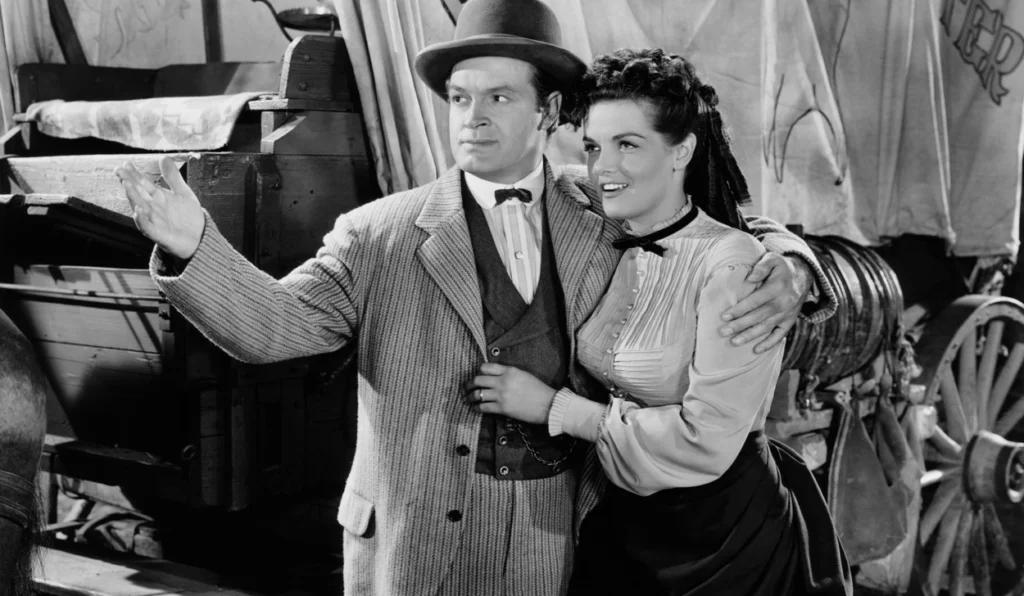
As the inept dentist “Painless” Peter Potter, Hope delivered one of his most perfectly realized comic performances alongside Jane Russell’s gun-slinging Calamity Jane. His character’s misplaced confidence and accidental heroism create comedic gold as he’s mistakenly credited with being a fearless gunfighter while actually trembling in his boots. Hope’s performance of the Oscar-winning song “Buttons and Bows” became one of his signature musical numbers, showcasing his ability to blend comedy and music in a way that enhanced both elements. Turner Classic Movies explores the emotions driving the plot to an area of history that’s been thoroughly explored, but none quite like this.
The film’s clever inversion of Western tropes—with Hope’s character constantly being rescued by Russell’s capable heroine—allowed him to fully embrace his character’s cowardice and incompetence to hilarious effect. His physical comedy shines in sequences involving an oversized dentist’s chair and a memorably chaotic horse-riding scene that highlights Hope’s willingness to sacrifice dignity for laughs. “The Paleface” proved so successful that it spawned a sequel (“Son of Paleface”) and demonstrated Hope’s ability to carry a film without his usual partner Crosby, establishing him as a standalone box office draw.
3. Larry Lawrence in “The Ghost Breakers” (1940)
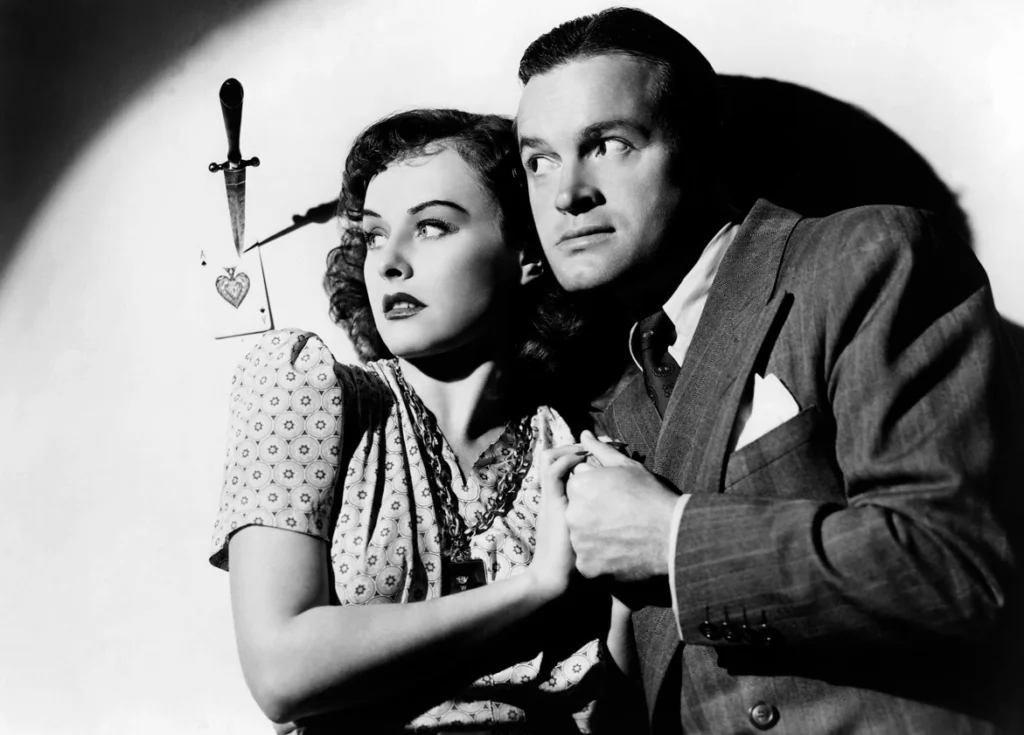
Hope’s turn as radio personality Larry Lawrence showcased his masterful ability to blend verbal wit with physical comedy in this supernatural comedy-thriller. His terrified reactions to the film’s haunted house setting provided the perfect canvas for Hope’s brand of cowardly comedy, with his trembling delivery of quips in the face of danger creating an irresistible contrast. The film’s combination of genuine atmosphere and Hope’s comic relief created a template for horror-comedy that films still follow today. Rotten Tomatoes explores how this film fits into the context of Hope’s genre trends, yet also shows how this manages to stand out among other great titles.
Hope’s chemistry with co-star Paulette Goddard (their second pairing after “The Cat and the Canary”) allowed him to alternate between romantic lead and frightened comic foil, showing his range as a performer. His nighttime exploration of the supposedly haunted mansion delivers some of cinema’s most perfectly timed comic reactions, with Hope’s expressive face communicating terror while his mouth continues delivering sardonic one-liners. “The Ghost Breakers” remains one of Hope’s most satisfying starring vehicles, balancing genuine thrills with his signature humor in a way that appealed to both comedy fans and thriller enthusiasts.
4. Himself in “Star Spangled Rhythm” (1942)
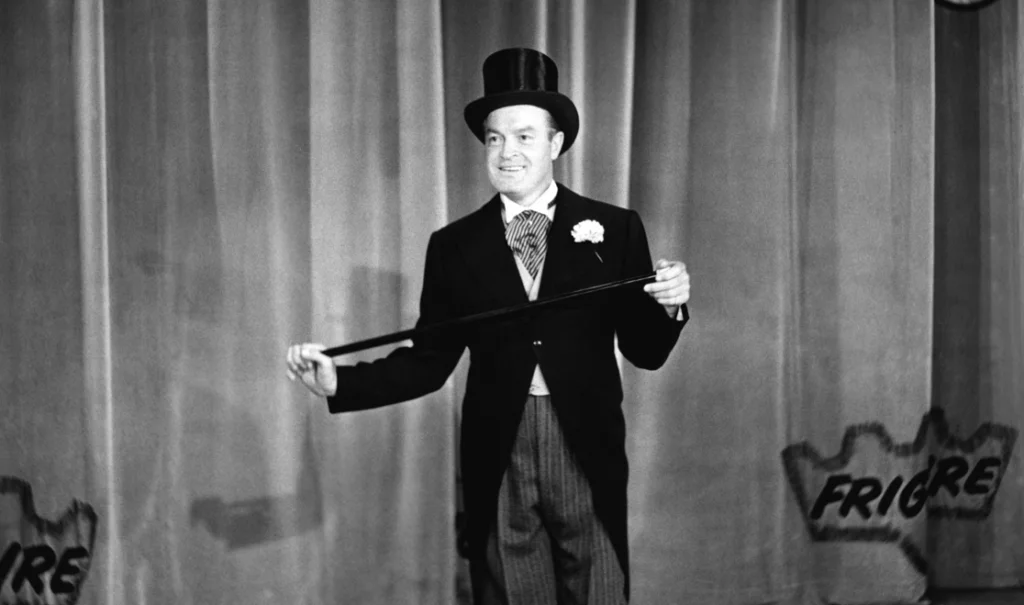
Though technically playing himself in this wartime musical comedy, Hope’s segment—in which he performs “That Old Black Magic” while dancers continually interrupt his performance—stands as one of his most memorable comic sequences. His increasingly frustrated reactions as his spotlight is repeatedly stolen showcase his impeccable timing and ability to milk comedy from the simplest of premises. The performance exemplifies Hope’s vaudeville-honed skill at appearing simultaneously annoyed and completely in control of the comedy unfolding around him.
What makes this performance particularly special is how it captures Hope’s unique ability to be both the straight man and comic relief simultaneously, creating laughs through his reactions rather than traditional punchlines. His deadpan expressions and perfectly timed double-takes as the dancers continually upstage him reveal a masterclass in comic restraint. This self-referential performance encapsulates what audiences loved about Hope—his willingness to play himself as slightly pompous yet ultimately good-natured when things inevitably go awry.
5. Sydney Milburn in “Fancy Pants” (1950)
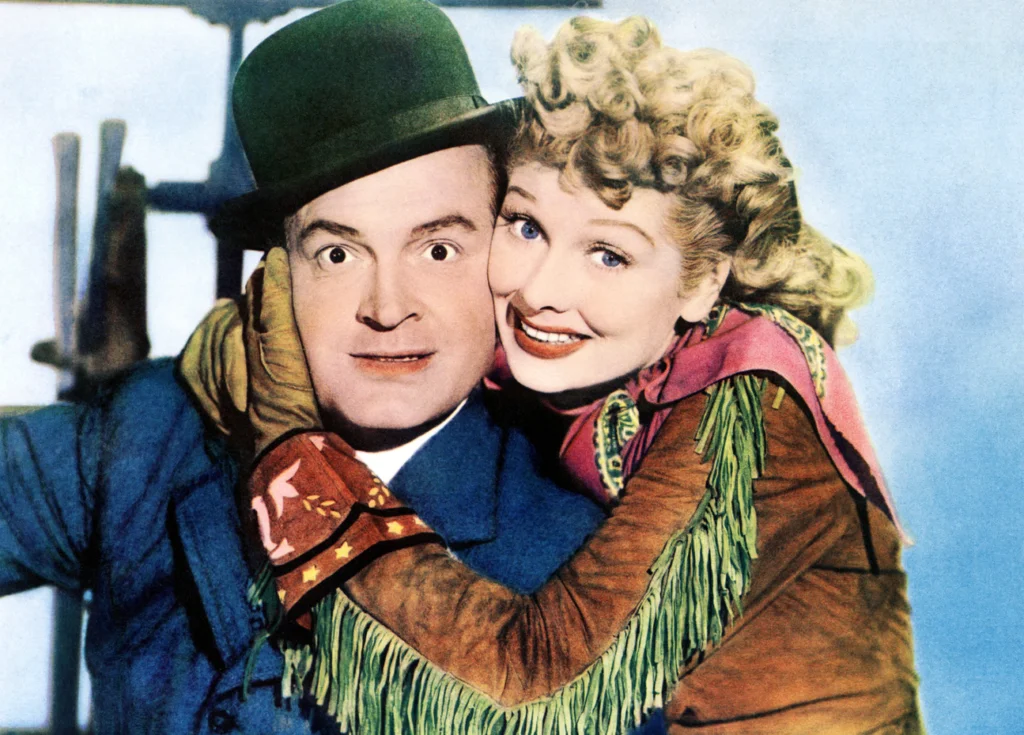
As an out-of-work British actor who finds himself impersonating an English butler in the American West, Hope delivered a performance that showcased his gift for character comedy and physical humor. His attempts to maintain the facade of British refinement while navigating the rough-and-tumble realities of frontier life create numerous opportunities for Hope’s signature brand of fish-out-of-water comedy. The role allowed him to employ a comically exaggerated British accent and aristocratic mannerisms that played perfectly against his natural persona.
Hope’s comedy shines brightest in the film’s set pieces—particularly a memorable scene involving an ill-fated attempt to serve dinner during a windstorm, which showcases his impeccable physical timing. His chemistry with co-star Lucille Ball (just before her “I Love Lucy” superstardom) creates a perfect comic pairing, with their contrasting styles—his verbal wit versus her physical comedy—enhancing both performances. “Fancy Pants” demonstrates Hope’s versatility by placing his character in a broader comedic situation than his usual wise-guy roles, proving he could generate laughs through character as effectively as through one-liners.
6. Orville J. “Turkey” Jackson in “The Lemon Drop Kid” (1951)
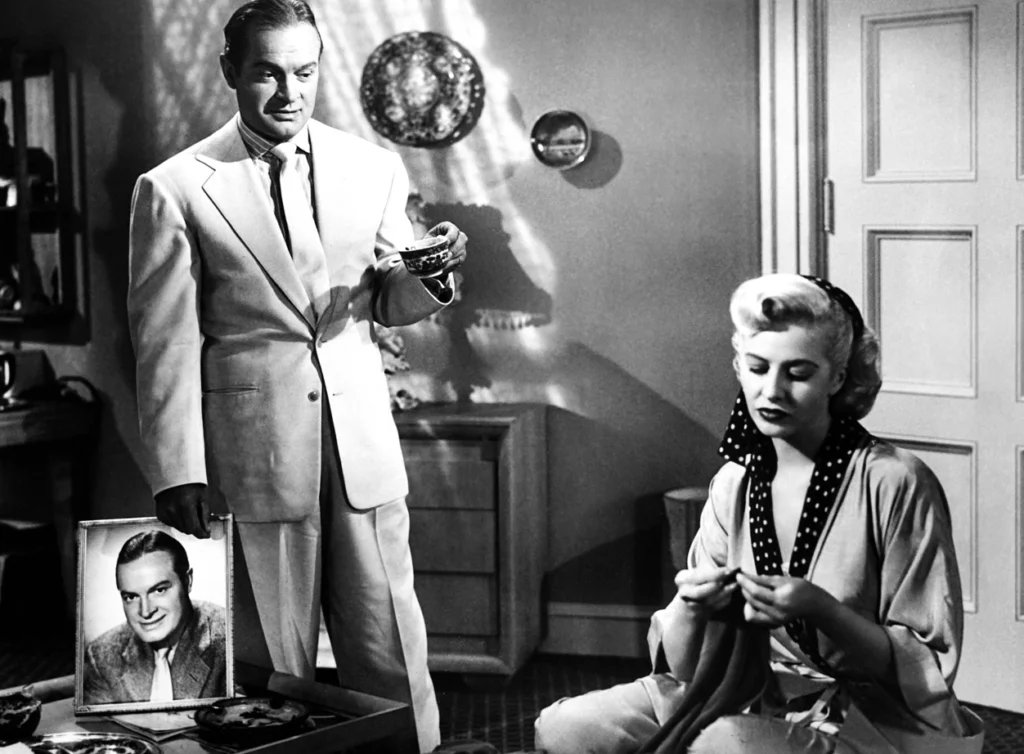
Based on a Damon Runyon story, “The Lemon Drop Kid” features Hope as a small-time hustler who must raise money to pay back a gangster after a horse racing scam goes wrong. The role perfectly suits Hope’s talents as a fast-talking charmer whose schemes inevitably backfire, forcing him to talk his way out of increasingly dire situations. The film introduced the Christmas standard “Silver Bells,” which Hope performs in a memorable street scene that showcases his ability to seamlessly blend comedy and sentiment.
Hope’s talent for playing lovable rogues reaches its pinnacle here, with his character’s eventual redemption feeling earned rather than forced thanks to the humanity he brings to the role. His disguise as an elderly woman running a charity scam provides some of the film’s biggest laughs and demonstrates Hope’s willingness to embrace absurdity in service of comedy. The film’s successful mix of humor, heart, and holiday spirit has made it a perennial favorite, with Hope’s performance capturing the perfect balance between comic scheming and genuine warmth.
7. Hap Smith in “My Favorite Blonde” (1942)
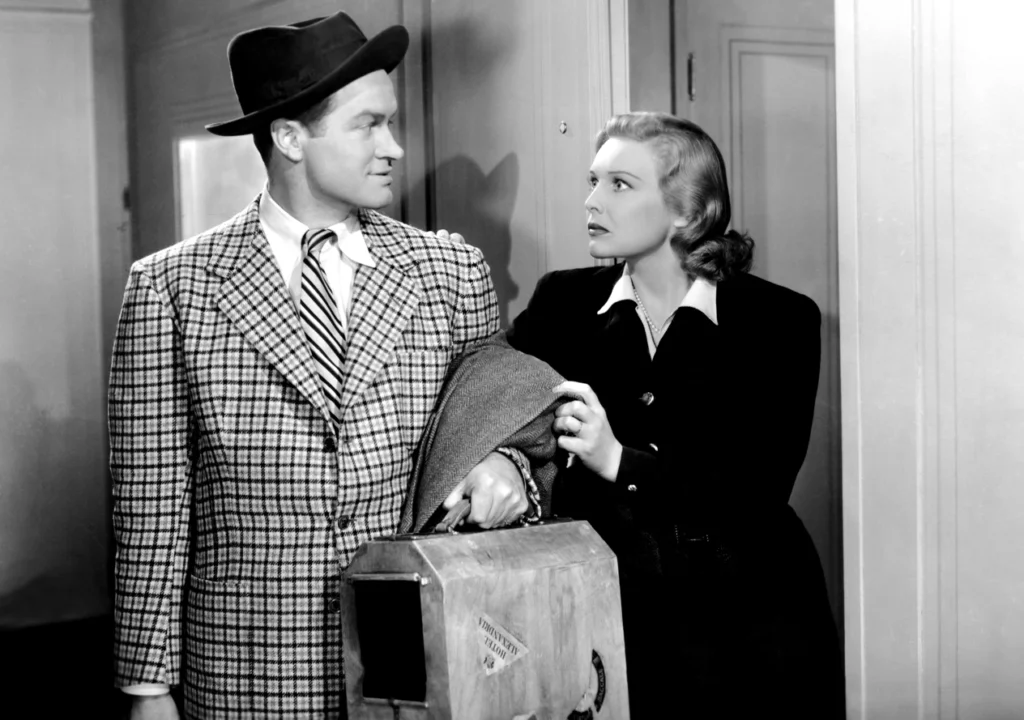
In this spy comedy, Hope plays a vaudeville performer traveling with a penguin act who becomes unwittingly entangled with a British spy (Madeleine Carroll) carrying secret information. The role perfectly utilizes Hope’s established persona as an ordinary guy thrust into extraordinary circumstances, allowing for his signature combination of verbal wit and physical cowardice. The film’s chase structure provides numerous opportunities for Hope’s reactionary comedy as he finds himself in increasingly dangerous situations while trying desperately to escape.
Hope’s chemistry with both his human co-star and his penguin sidekick demonstrates his remarkable ability to play off any scene partner, animate or inanimate. His famous road pictures with Bing Crosby often overshadow this gem, but “My Favorite Blonde” showcases Hope at the height of his comic powers, delivering lines with machine-gun rapidity and perfect timing. The film’s successful blend of comedy and suspense elements, anchored by Hope’s performance, influenced countless comedic spy films that followed and proved that Hope could carry a film without his usual partner.
8. Aunt Lucy in “The Greatest Story Ever Sold” TV Special (1970)
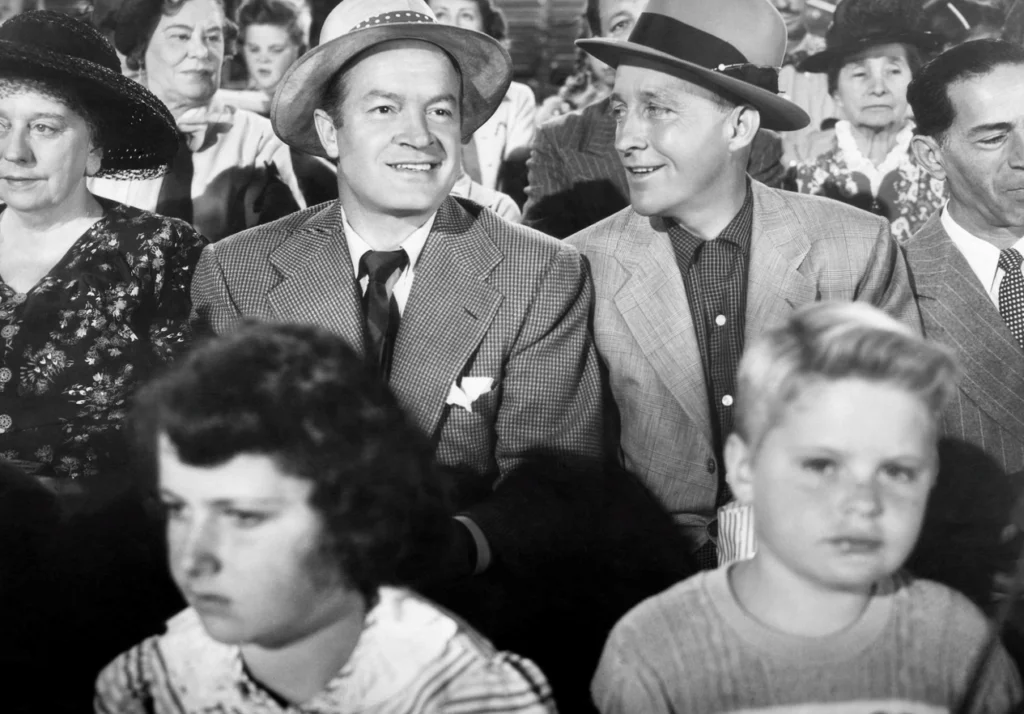
While primarily known for his film roles, Hope’s television specials contained some of his most memorable comic performances, particularly his recurring character of “Aunt Lucy” in comedy sketches. His willingness to don a wig and dress for laughs (decades before cross-dressing comedy became a standard trope) demonstrated Hope’s commitment to comedy regardless of personal dignity. The character became a fan favorite on his NBC specials, with Hope’s deadpan delivery and surprisingly convincing mannerisms creating a character both outrageous and oddly believable.
“The Greatest Story Ever Sold” special featured Aunt Lucy at her most memorable, with Hope’s physical comedy and vocal affectations creating moments of pure comic inspiration. The studio audience’s uproarious reaction to Hope’s entrance in full Aunt Lucy regalia demonstrates the character’s beloved status and Hope’s mastery of the unexpected laugh. This television performance, though less known than his film roles, showcases Hope’s versatility and willingness to push comedic boundaries for his audience’s entertainment.
9. Wally Campbell in “The Cat and the Canary” (1939)
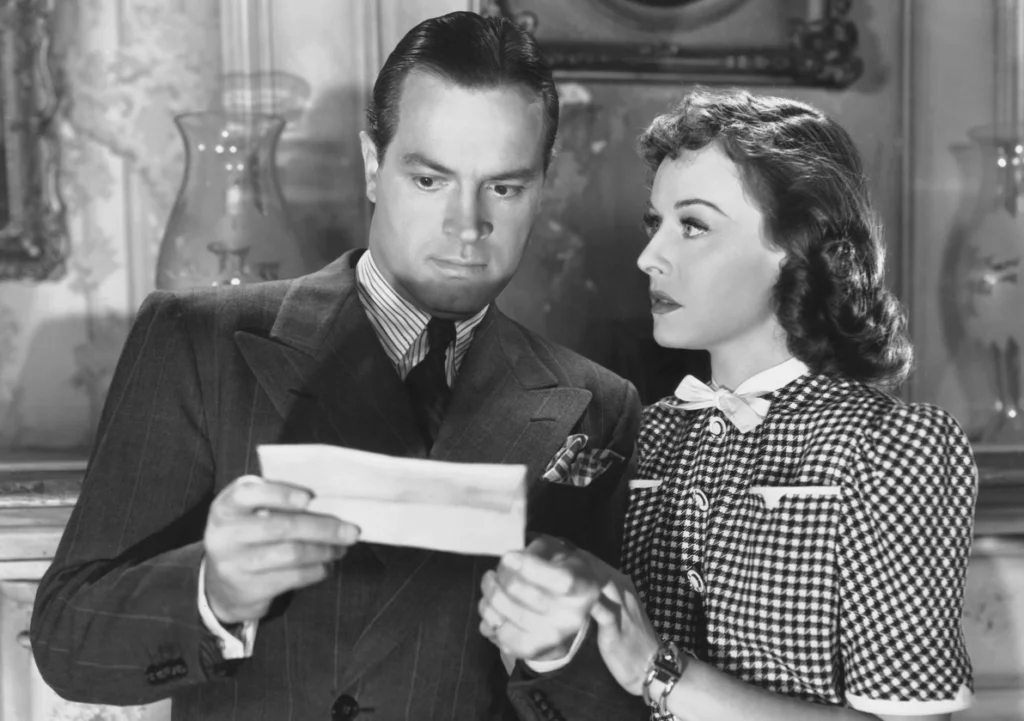
Hope’s breakthrough film role came in this horror-comedy, where he plays an actor whose wisecracks mask his fear as the characters find themselves in a genuinely creepy old mansion for the reading of a will. The performance established Hope’s signature screen persona—the coward whose mouth writes checks his courage can’t cash—and demonstrated his perfect timing when delivering sardonic comments in frightening situations. His chemistry with Paulette Goddard proved so successful that the pair were immediately reteamed for “The Ghost Breakers.”
What makes the performance particularly effective is Hope’s ability to generate genuine laughs while still allowing the film’s atmospheric elements to create real tension. His line “Don’t big empty houses scare you? Not me, I used to be in vaudeville” perfectly captures the self-referential humor that would become his trademark. This role effectively transferred Hope’s successful radio and stage persona to film, beginning a movie career that would span decades and establishing him as one of Hollywood’s most bankable comedy stars.
10. Himself in USO Shows (1941-1991)
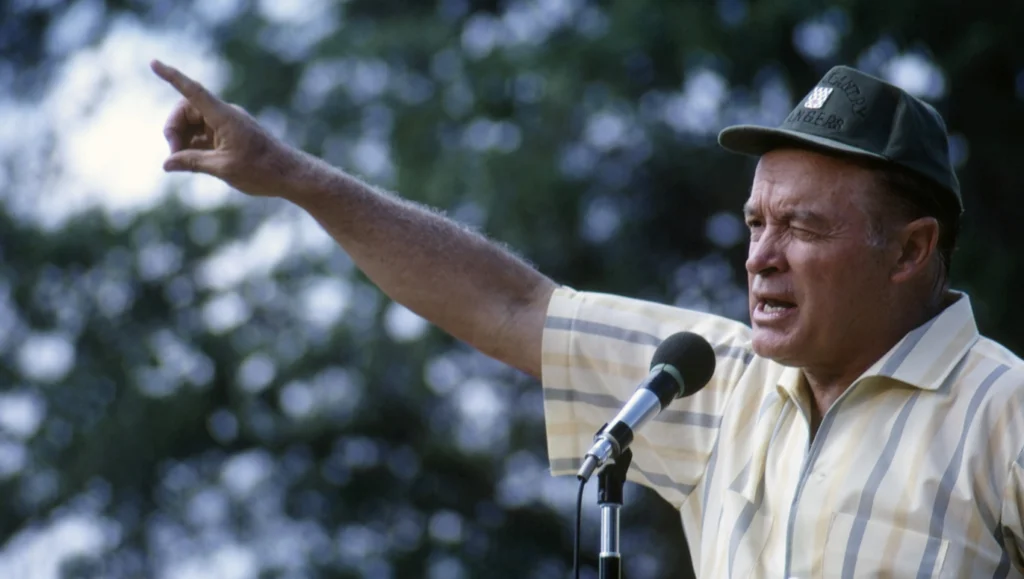
While not a traditional film or television role, Hope’s performances for American troops through the USO represent some of his most important and beloved comedy work spanning five decades. His willingness to travel to active war zones—often at considerable personal risk—to entertain servicemen and women showcased not just his patriotism but his remarkable ability to connect with audiences in the most challenging circumstances. The topical jokes, celebrity guests, and occasional musical numbers he brought to these shows provided crucial morale boosts during World War II, Korea, Vietnam, and the first Gulf War.
Hope’s comedy in these shows was particularly impressive for its ability to acknowledge the harsh realities of war while still providing genuine laughs and moments of normalcy for troops far from home. His timing and delivery in these performances—often performed on makeshift stages in difficult conditions—demonstrated his consummate professionalism and adaptability as a performer. These USO appearances, more than any movie role, cemented Hope’s place in American cultural history and earned him the lasting gratitude of generations of military personnel.
11. Chester Hooton in “The Princess and the Pirate” (1944)
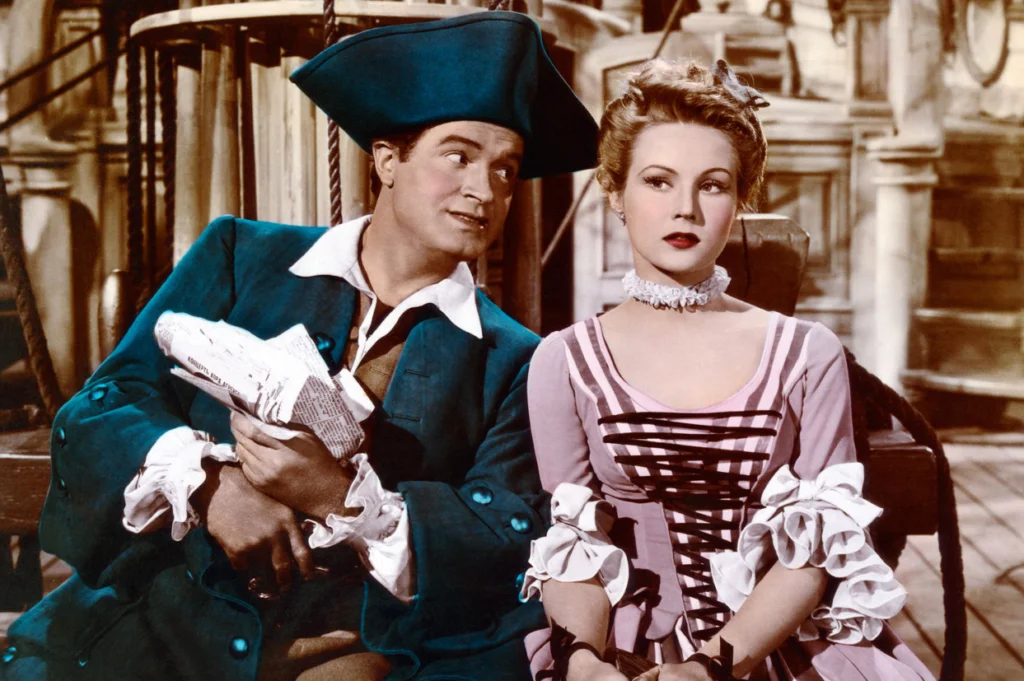
As the cowardly actor Sylvester the Great (later revealed to be Chester Hooton), Hope delivered one of his most purely entertaining performances in this Technicolor swashbuckler spoof. The role plays perfectly to Hope’s strengths, allowing him to showcase his talents as a reluctant hero whose instinct for self-preservation constantly battles with his growing affection for the princess he’s helping to rescue. His disguises throughout the film—including a memorable turn as an elderly tattooist—provide opportunities for physical comedy and character work beyond his usual wise-cracking persona.
The film’s meta-comedy reaches its peak in the final scene, when Hope’s character realizes he’s not getting the girl because “This is a Samuel Goldwyn picture, and the hero always gets the girl—and I’m not the hero!” Looking directly into the camera, he delivers the classic line, “That isn’t the way I heard it from Goldwyn,” breaking the fourth wall in a way that delighted 1944 audiences and anticipated modern self-referential comedy. His chemistry with Virginia Mayo and Walter Brennan, plus his comic confrontations with Victor McLaglen’s menacing pirate captain, create the perfect framework for Hope’s brand of cowardly comedy.
12. Harry Howe in “Paris Holiday” (1958)
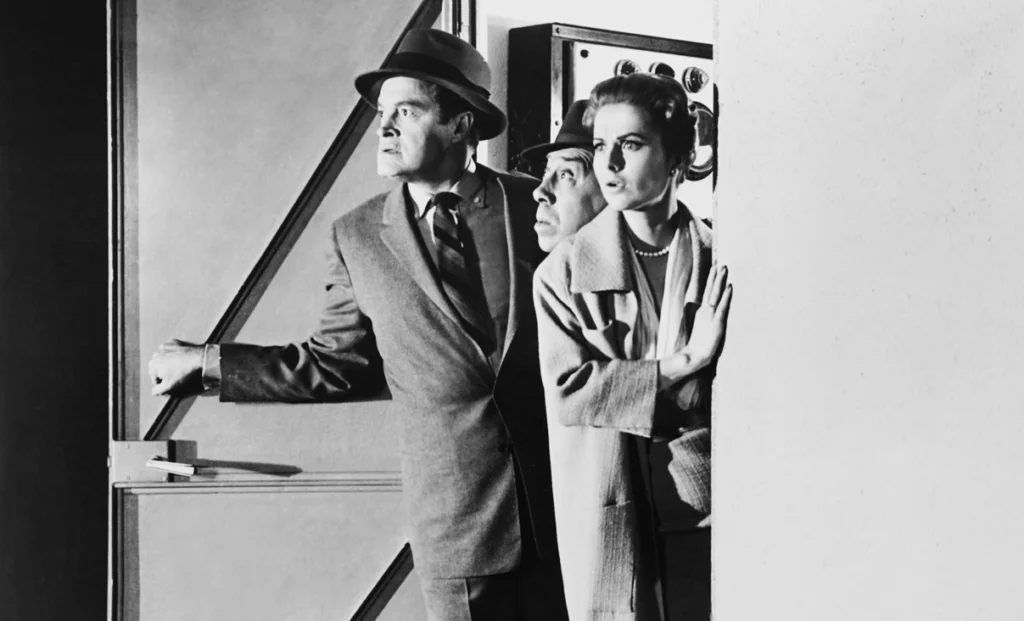
Starring alongside international comedy legend Fernandel, Hope plays an American entertainer visiting France who becomes entangled in intrigue involving counterfeit currency. The unique pairing of these two comedy giants—each with their distinctive style and physical appearance—creates fascinating comic contrasts that transcend language barriers. Hope’s rapid-fire English delivery plays brilliantly against Fernandel’s expressive face and French exclamations, creating a truly international comedy that showcases Hope’s ability to adapt his style to different partners.
The film’s Parisian locations provide a glamorous backdrop for Hope’s comedy, with scenes at the Eiffel Tower and on the Seine allowing him to blend sophisticated travel comedy with his trademark cowardly reactions to danger. His romance with Anita Ekberg demonstrates his continuing appeal as a romantic comedy lead even into his mid-50s, while his comic timing remains impeccable throughout. While not among his most famous films, “Paris Holiday” represents Hope’s willingness to expand his comedy beyond familiar formulas and engage with international audiences and performers.
13. Dodge City Dude in “Alias Jesse James” (1959)
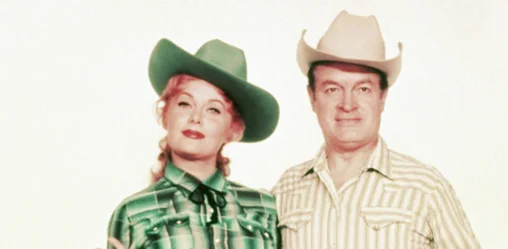
In this Western comedy, Hope plays an insurance salesman who unknowingly sells a policy to outlaw Jesse James and then must prevent the desperado from collecting by getting himself killed. The film features Hope at his most physically comedic, with sequences involving bucking broncos, gunfights, and mistaken identities showcasing his commitment to full-body comedy even as he entered his mid-50s. The famous finale, featuring cameos from numerous Western stars including Gary Cooper, James Garner, and Roy Rogers, demonstrates Hope’s standing in Hollywood that could attract such talent for brief appearances.
The role perfectly encapsulates Hope’s enduring comic persona—the fast-talking city slicker whose bravado crumbles in the face of actual danger but who somehow emerges triumphant through a combination of luck and occasional bursts of courage. His chemistry with Rhonda Fleming provides the requisite romantic subplot, while his comic confrontations with James’s gang offer opportunities for Hope’s signature cowardly comedy. “Alias Jesse James” represents the culmination of Hope’s film career before television became his primary medium, showcasing his fully developed comic style that had entertained audiences for decades.
Bob Hope’s remarkable comic legacy spans not just these thirteen roles but countless other performances across nearly every entertainment medium of the 20th century. His influence on comedy remains immeasurable—from his perfect timing and delivery to his fourth-wall-breaking asides and self-deprecating persona. Whether playing cowardly heroes, bumbling experts, or simply himself, Hope created characters and moments that continue to generate laughter decades after they were performed. His unique ability to adapt his comedy for film audiences, television viewers, and military personnel alike demonstrated a versatility and commitment to his craft that few entertainers have matched. In these performances, we see not just a comedian but a complete entertainer whose understanding of what makes people laugh transcended eras, formats, and global events.


